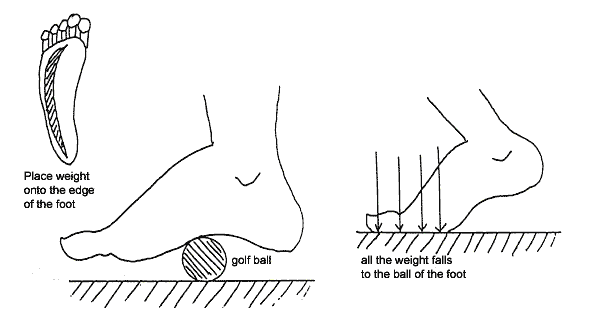
It is usually pain free, and you may just notice a small prominence over the inside of the arch. This extra bone is present in about 10% of people. Occasionally individuals are born with an extra bone (accessory navicular) in the tibialis posterior tendon (see diagram). If it stretches more than 1cm it loses all of its effectiveness, and support of the arch is lost. With wear the tendon does not usually snap, but stretches. In some people, usually those with a physiological flat foot to start with, the tendon can become worn. The tendon works over a very short distance – it only has to move about 1cm. This tibialis posterior initiates push off as you walk and supports the arch. It runs behind the inner bony prominence (medial malleolus) of your ankle.

The tendon attaches the tibialis posterior muscle to the navicular bone (see diagram). The commonest cause of flat foot in adults is stretching of the tibialis posterior tendon, this tendon lifts the arch of the foot. Tarsal coalitions, or bars, tend to first be noticed in children or young adults. You may hear people saying that there is a “bar” – this refers to the abnormal segment of bone, or bar, connecting the bones. You may hear your doctors talking about a tarsal coalition – this is just another way of saying that the bones have not separated. The small bones of the foot (tarsals) do not separate properly. In children the foot may not develop normally in the womb. The causes differ in children and adults. Such feet are said to be “pathological” – which just means abnormal. You should try to buy shoes with an arch support and a well-constructed, supportive heel.Ī small number of people have flat feet, which are a problem. Shoes tend to wear out more quickly in people with flat feet, but simply wearing comfortable shoes is the best initial treatment. If you have physiologically flat feet you can be reassured that there is no structural abnormality needing treatment. People with physiologically flat feet often have stretchy ligaments (hypermobility). When you stand on tiptoes the arch of the foot re-establishes. The arch is flattened, but the foot is supple and pain free. The commonest cause of a flat foot is the so-called “physiological flat foot.” This means that the flatness is a variation of normal. The vast majority of flat feet fall into this group. In these situations you may choose to seek medical help. The feet are numb, or you have difficulty feeling them.Asymmetrical (there is a difference between the two feet).In adults and children you should worry about a flat foot if it is:

Damage to the Tibialis Posterior tendon can cause the foot to flatten. There is a large muscle, the Tibialis Posterior muscle, which supports the arch. The ligaments and muscles form secondary supports. The shape of the bones sets the shape of the foot.

The medical terms for flat foot and high arches are “pes planus” and “pes cavus” respectively. High arches are associated with problems – although these problems tend to be different to those seen with flat feet. In some people the arch is minimal or absent, these individuals are said to have “flat feet.” In the majority of cases this “flatness” is NORMAL, and nothing to worry about. The arch develops in childhood, between the ages of three and 10 years. In many shoes the shoe is designed so that the arch is supported by an “arch support.”

This arch creates a space between the ground and the foot. Most people have an arch along the inside of the foot.


 0 kommentar(er)
0 kommentar(er)
